The main ''weakness'' with TTL/BL is that it tends to under-expose when using straight up bounce flash . But as mentioned before there is a 'consistency' to this weakness that can be exploited . It under-exposes because it is exposing for the brightest object within the focus point diamond for some reason . This is not a problem when there is a black background but causes severe under-exposure with white in the frame . When spot metering off a white subject you would normally add +1.3 EV compensation to make it 'white' without blowing any details .
I've used this same compensation in my examples .
One instance where this 'weakness' can be used to advantage is when there is a consistent light coloured background - for example at a craft fair or art fair where everything is mounted on the same white wall or in white cubicles . If the ceiling is low enough to bounce off you only need to make one compensation adjustment for that background and be sure that at least one focus point is on the background in each picture .
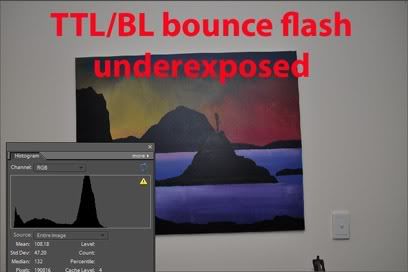
In this case +1.3 dialed in to the flash head did the job .
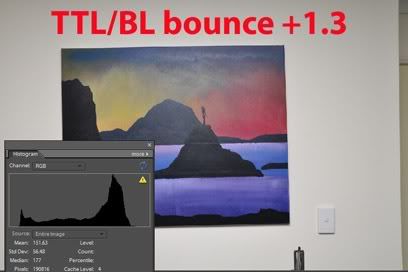
Then each picture with the same colour wall in the background shows a consistent histogram on the right , the position of that right portion is in almost exactly the same place regardless of a bright subject or a dark subject .
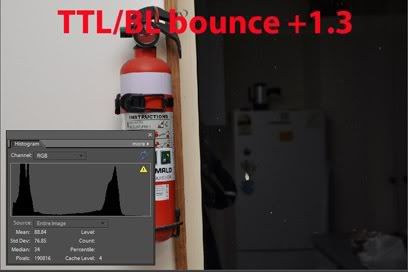
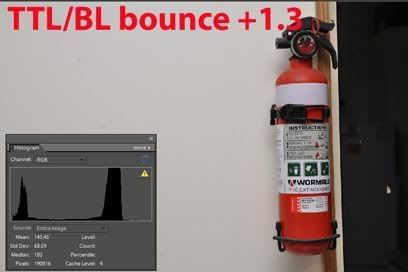
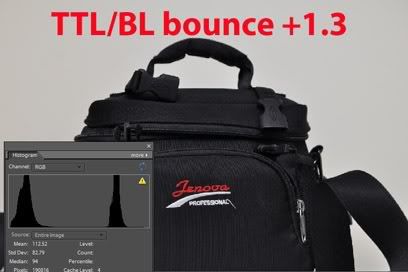
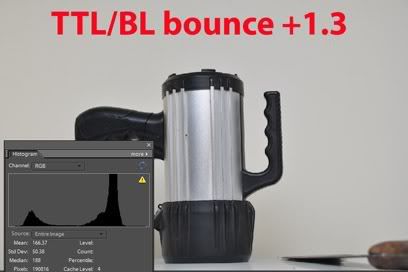
Now compare this to TTL flash - look how the right hand side of the histogram is all over the place . Not that you couldn't set TTL to +1.3 and use FV-lock off the wall to get the same consistency - just make sure you understand how each system works and know beforehand what results you will get and why- then you can choose for yourself what you want to use .
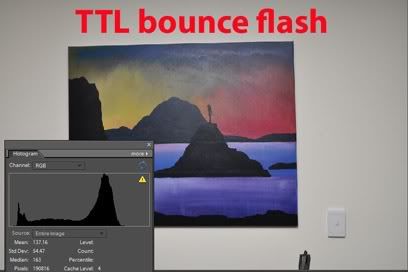
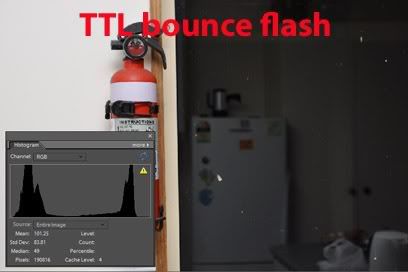
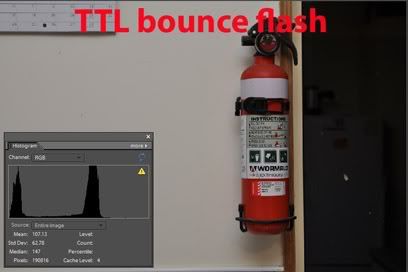
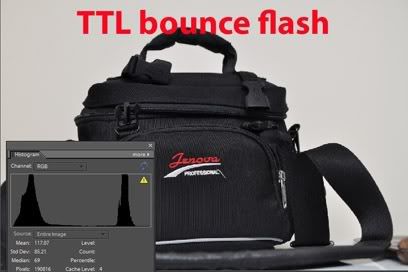
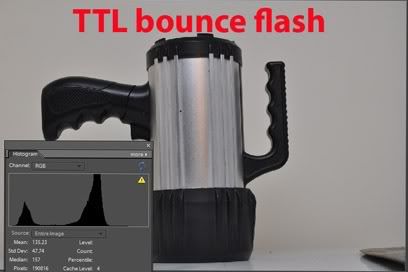
Since TTL uses the centre of the frame and the 'matrix' pattern which I selected [ Centre weighted would have given similar results ] I suppose you could say it could be 'predicted' and adjusted accordingly but it would involve a lot of skill to know what settings to use in such a variety of situations - with an equally large variety of compensation adjustments .
It is good to know that the 'weakness' of TTL/BL can be used to advantage because of its predictability but you would think Nikon could have done better .
I need to do more tests with the diffuser dome - I am getting some interesting results with i
I've used this same compensation in my examples .
One instance where this 'weakness' can be used to advantage is when there is a consistent light coloured background - for example at a craft fair or art fair where everything is mounted on the same white wall or in white cubicles . If the ceiling is low enough to bounce off you only need to make one compensation adjustment for that background and be sure that at least one focus point is on the background in each picture .

In this case +1.3 dialed in to the flash head did the job .

Then each picture with the same colour wall in the background shows a consistent histogram on the right , the position of that right portion is in almost exactly the same place regardless of a bright subject or a dark subject .




Now compare this to TTL flash - look how the right hand side of the histogram is all over the place . Not that you couldn't set TTL to +1.3 and use FV-lock off the wall to get the same consistency - just make sure you understand how each system works and know beforehand what results you will get and why- then you can choose for yourself what you want to use .





Since TTL uses the centre of the frame and the 'matrix' pattern which I selected [ Centre weighted would have given similar results ] I suppose you could say it could be 'predicted' and adjusted accordingly but it would involve a lot of skill to know what settings to use in such a variety of situations - with an equally large variety of compensation adjustments .
It is good to know that the 'weakness' of TTL/BL can be used to advantage because of its predictability but you would think Nikon could have done better .
I need to do more tests with the diffuser dome - I am getting some interesting results with i
